Investigative Method for Fatigue Crack Propagation Based on a Small Time Scale
Abstract
:1. Introduction
2. Methodology
2.1. In-Situ SEM Testing Based on Small Time Scale
2.2. Measurement for Crack Growth Opening Displacement
- In the plastic zone correction of linear elastic fracture mechanics, when the crack propagates, the origin crack tip of point A grows to point A’. The CTOD is defined as the displacement of the origin crack tip on the Y axis, as shown in Figure 3. However, it is not easy to determine the position of point A.
- The second measurement method of CTOD is shown as Figure 4. The intersection point of the elastic zone and plastic zone on the crack surface is regard as point A. The displacement of intersection point A is the length of line AB, and the CTOD is double the length of line AB. However, the displacement is hard to measure effectively from the experiment.
- Point C of the crack tip after growth is regard as the apex. Based on the original crack (X axis), the right triangle is formed, which is symmetrical to the origin crack. The opposite sides of the right triangle and the crack surface intersect two points, A and B, and the CTOD is the length of line AB, as shown in Figure 5. This measurement method of CTOD is currently widely used.
2.3. Stress Intensity Factor
2.4. Modeling of Crack Tip Opening Displacement
3. Experimental Investigation for Aluminum Alloy 7050-T7451
3.1. Material and Specimen
3.2. Experimental Setup
4. Results and Discussion
4.1. Fatigue Crack Opening and Closure
4.2. Unstable Fatigue Crack Propagation
5. Conclusions and Future Work
Author Contributions
Funding
Acknowledgments
Conflicts of Interest
References
- Lu, Z.; Liu, Y. Small time scale fatigue crack growth analysis. Int. J. Fatigue 2010, 32, 1306–1321. [Google Scholar] [CrossRef]
- Chandran, K.S.R. A physical model and constitutive equations for complete characterization of S-N fatigue behavior of metals. Acta Mater. 2016, 121, 85–103. [Google Scholar] [CrossRef]
- Lv, Z.; Cai, P.; Yu, T.; Jin, Y.; Zhang, H.; Fu, W.; Zhai, T. Fatigue behaviors and damage mechanism of a Cr Mn N austenitic steel. J. Alloys Compd. 2017, 691, 103–109. [Google Scholar] [CrossRef]
- Yan, L.; Fan, J.K. In-situ SEM study of fatigue crack initiation and propagation behavior in 2524 aluminum alloy. Mater. Des. 2016, 110, 592–601. [Google Scholar] [CrossRef]
- Ma, X. On the fatigue small crack behaviors of directionally solidified superalloy DZ4 by in situ SEM observations. In Proceedings of the 2nd International Conference on Advances in Product Development and Reliability, Shenyang, China, 28–30 July 2010; pp. 91–98. [Google Scholar]
- Zhang, W. Multi-Resolution In-Situ Testing for Fatigue Crack Growth Mechanism Investigation and Model Development. Ph.D. Thesis, Clarkson University, Potsdam, NY, USA, 2012. [Google Scholar]
- Lu, Z.; Liu, Y. A comparative study between a small time scale model and the two driving force model for fatigue analysis. Int. J. Fatigue 2012, 42, 57–70. [Google Scholar] [CrossRef]
- Andersson, H.; Persson, C. In-situ SEM study of fatigue crack growth behaviour in IN718. Int. J. Fatigue 2004, 26, 211–219. [Google Scholar] [CrossRef]
- Ma, X.; Shi, H.J. In situ SEM studies of the low cycle fatigue behavior of DZ4 superalloy at elevated temperature: Effect of partial recrystallization. Int. J. Fatigue 2014, 61, 255–263. [Google Scholar] [CrossRef]
- Chai, G.; Peng, R.L.; Johansson, S. Fatigue Behaviors in Duplex Stainless Steel Studied Using In-situ SEM/EBSD Method. In Proceedings of the 20th European Conference on Fracture (ECF), Trondheim, Norway, 30 June–4 July 2014; pp. 1748–1753. [Google Scholar]
- Qiu, W.; He, Z.; Fan, Y.N.; Shi, H.J.; Gu, J. Effects of secondary orientation on crack closure behavior of nickel-based single crystal superalloys. Int. J. Fatigue 2016, 83, 335–343. [Google Scholar] [CrossRef]
- Zhang, X.P.; Wang, C.H.; Ye, L.; Mai, Y.W. In situ investigation of small fatigue crack growth in poly-crystal and single-crystal aluminium alloys. Fatigue Fract. Eng. Mater. Struct. 2002, 252, 141–150. [Google Scholar] [CrossRef]
- Schijve, J. Fatigue of Structures and Materials, 2nd ed.; Springer Science + Business Media: Berlin, Germany, 2009; pp. 105–140. ISBN 9781402068072. [Google Scholar]
- Li, Z.; Guan, Z.; Zhang, J. Applied Fracture Mechanics, 1st ed.; Beihang University Press: Beijing, China, 2012; pp. 128–131. ISBN 9787512406193. [Google Scholar]
- Tada, H.; Paris, P.C.; Irvin, G.R. The Stress Analysis of Cracks Handbook, 3rd ed.; John Wiley and Sons Ltd.: Hoboken, NJ, USA, 2000; p. 53. ISBN 9781860583049. [Google Scholar]
- Zhou, L.; Wang, T.; Zhou, W.L.; Li, Z.Y.; Huang, Y.X.; Feng, J.C. Microstructural Characteristics and Mechanical Properties of 7050-T7451 Aluminum Alloy Friction Stir-Welded Joints. J. Mater. Eng. Perform. 2016, 25, 2542–2550. [Google Scholar] [CrossRef]
- Dixon, B.; Molent, L.; Barter, S. A study of fatigue variability in aluminium alloy 7050-T7451. Int. J. Fatigue 2016, 92, 130–146. [Google Scholar] [CrossRef]
- Wang, W.; Zhang, W.; Wang, H.; Fang, X.; Liang, X. Influence of Grain Boundary on the Fatigue Crack Growth of 7050-T7451 Aluminum Alloy Based on Small Time Scale Method. Adv. Mater. Sci. Technol. 2016. [Google Scholar] [CrossRef]
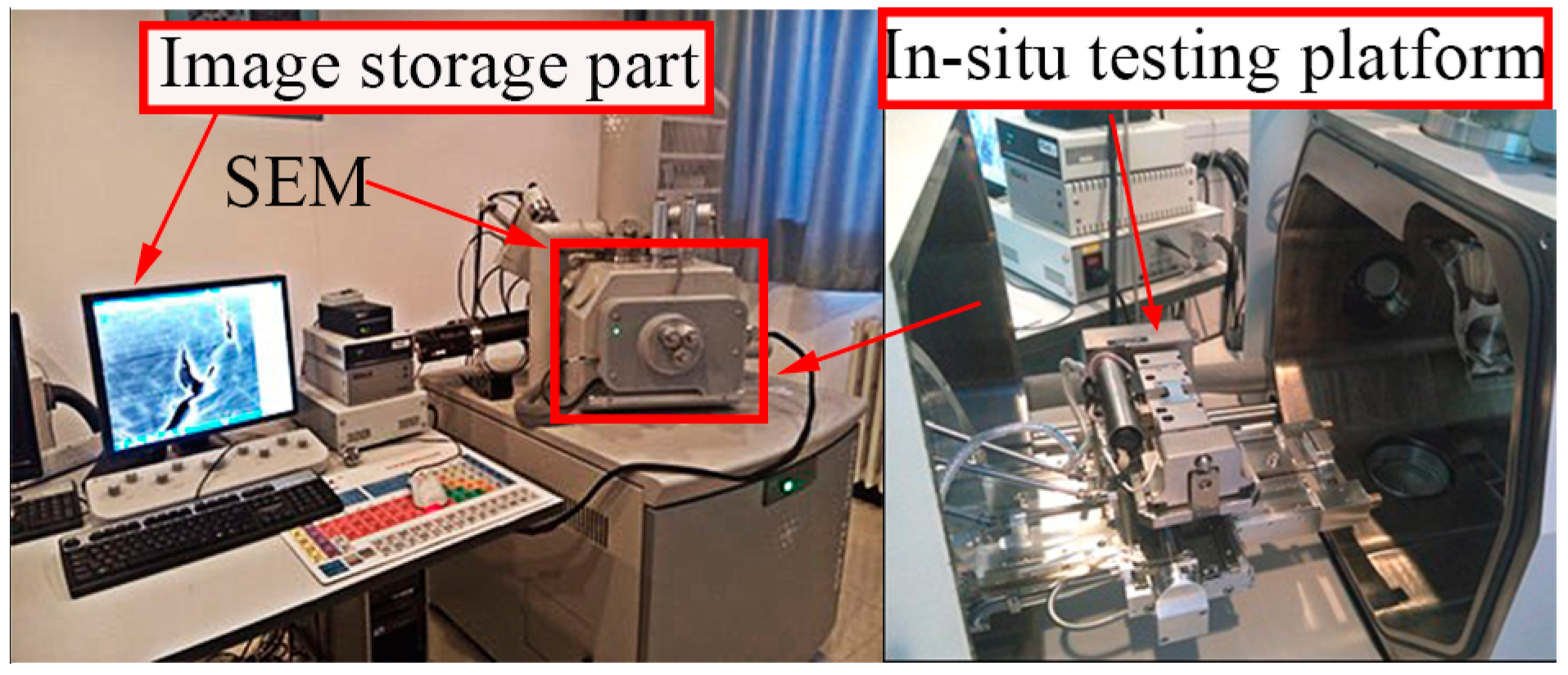
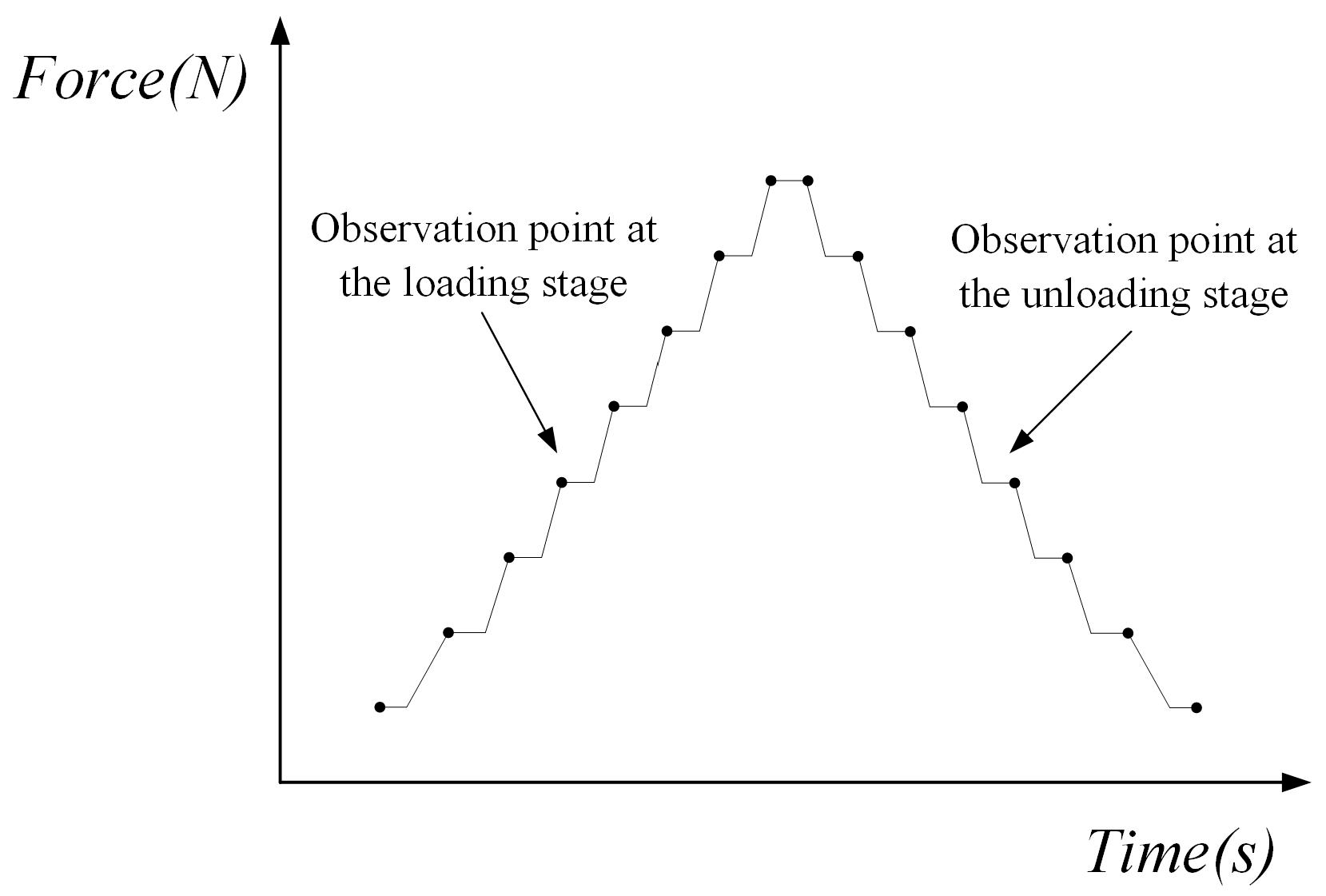
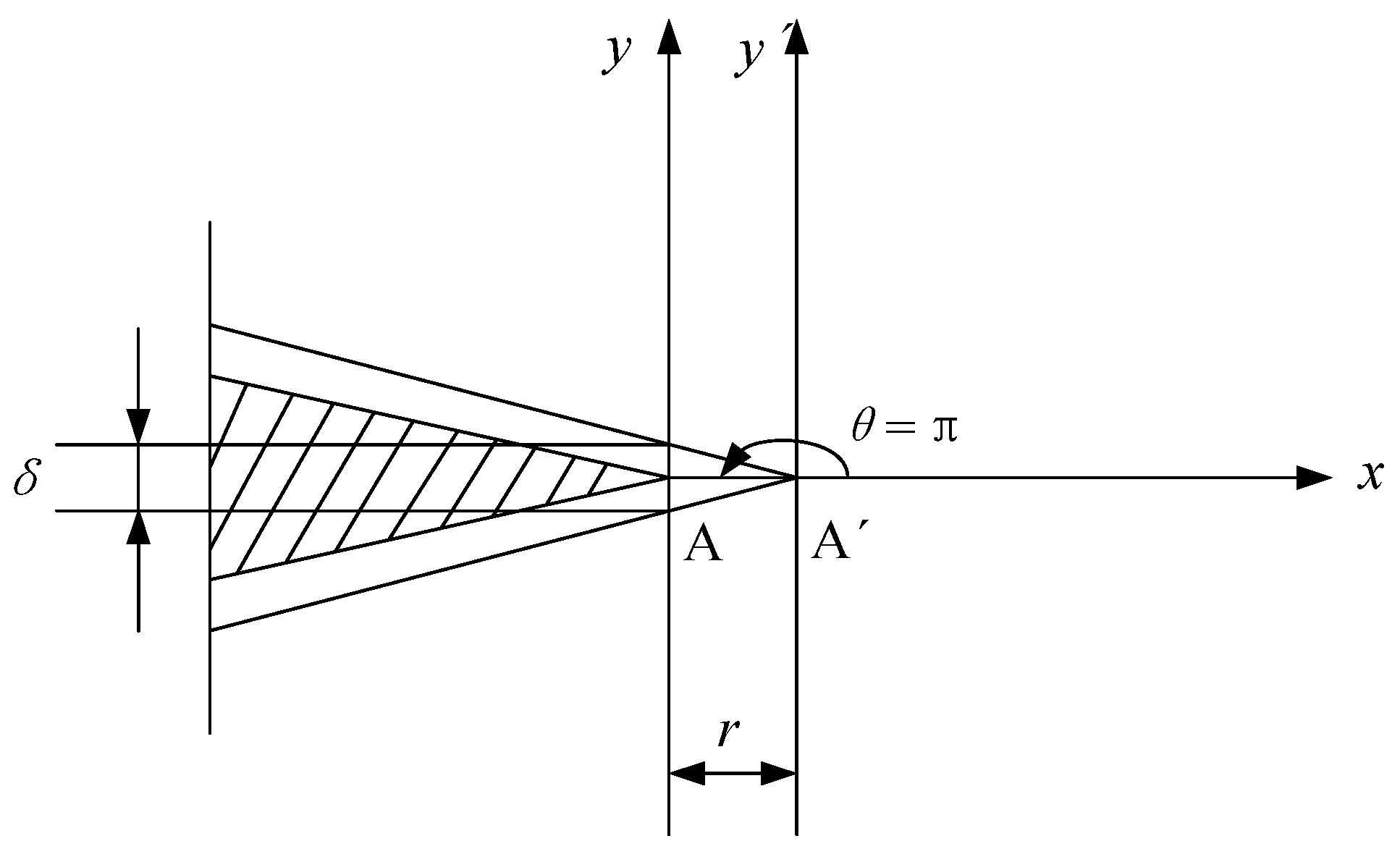
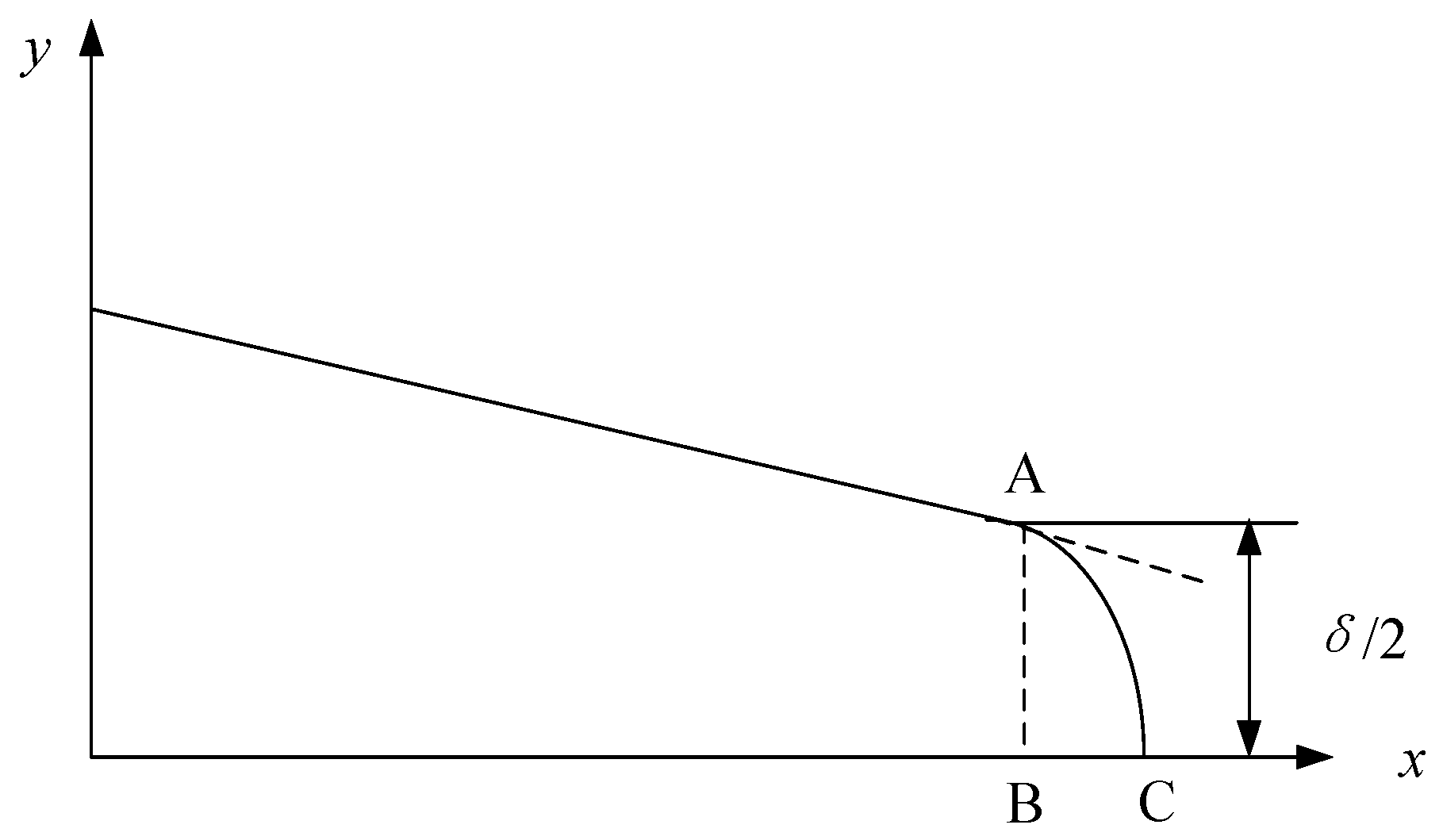
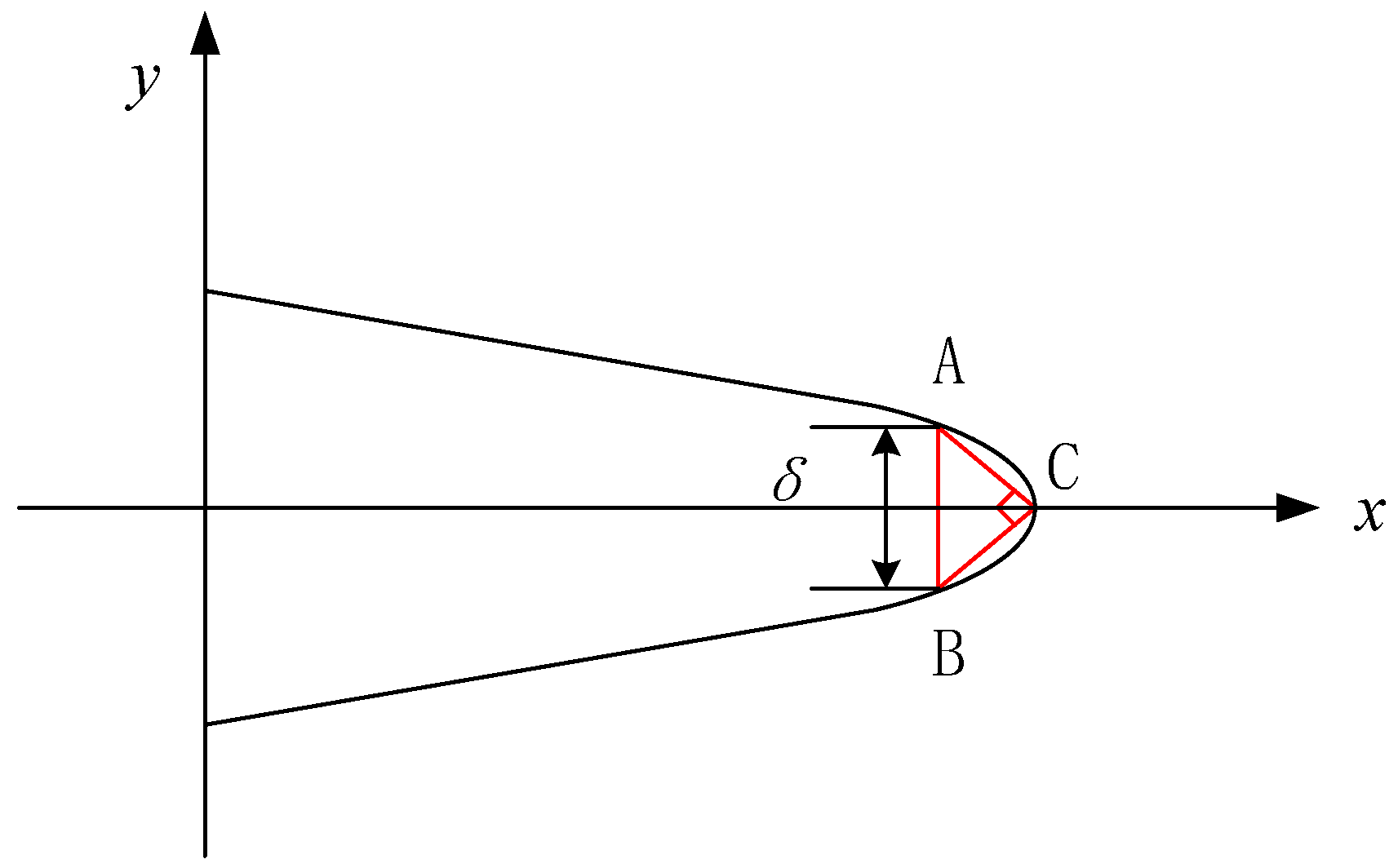
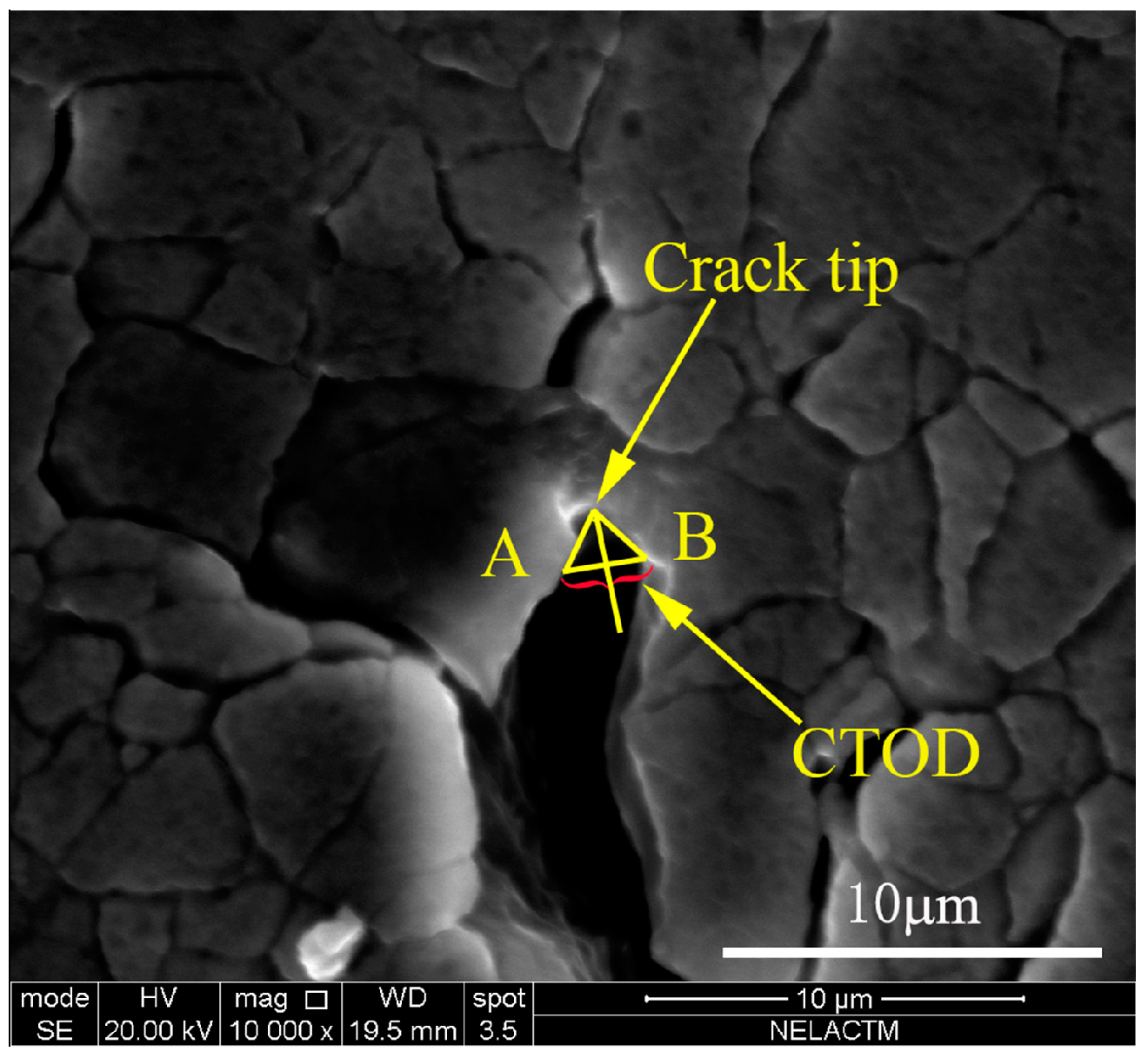

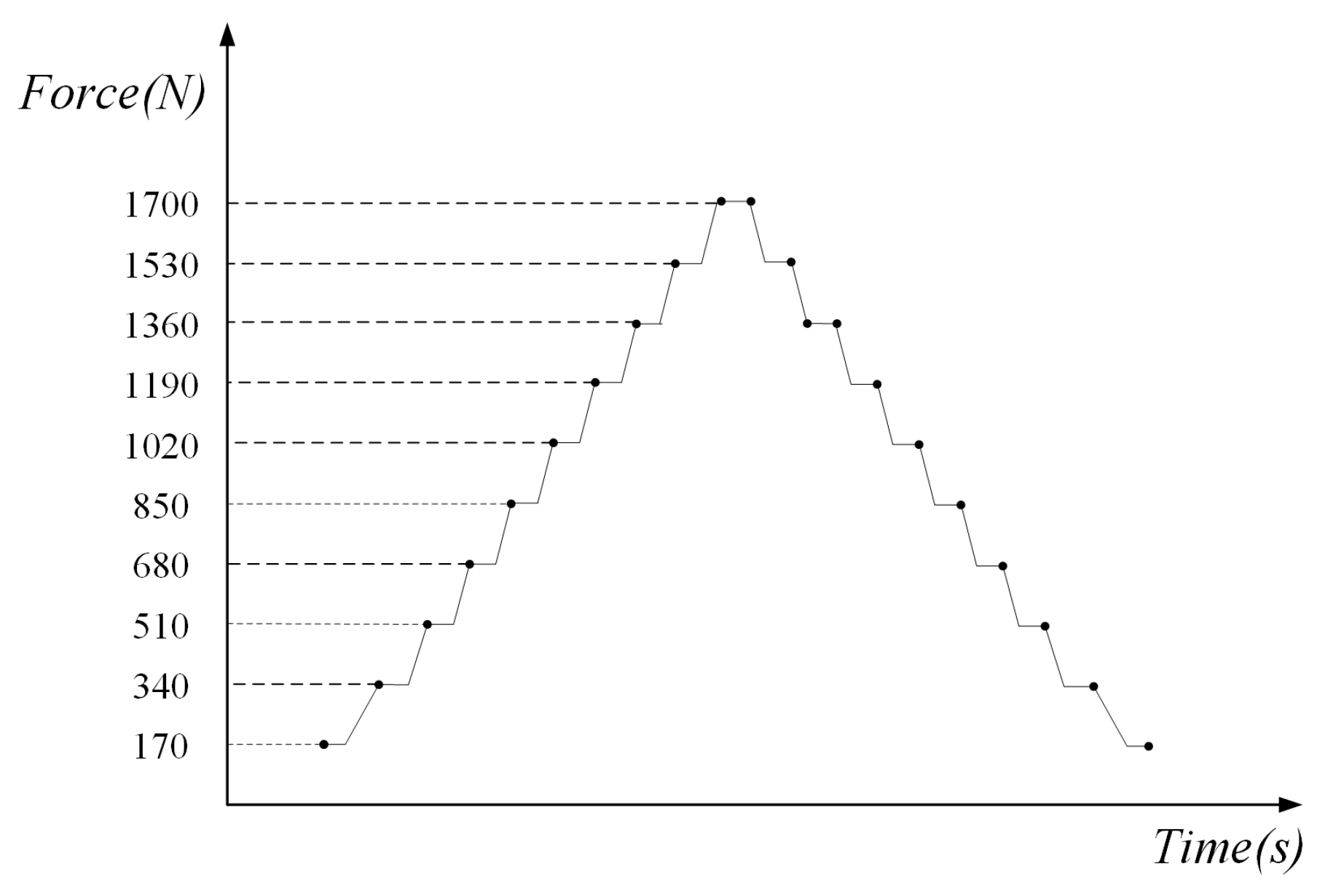
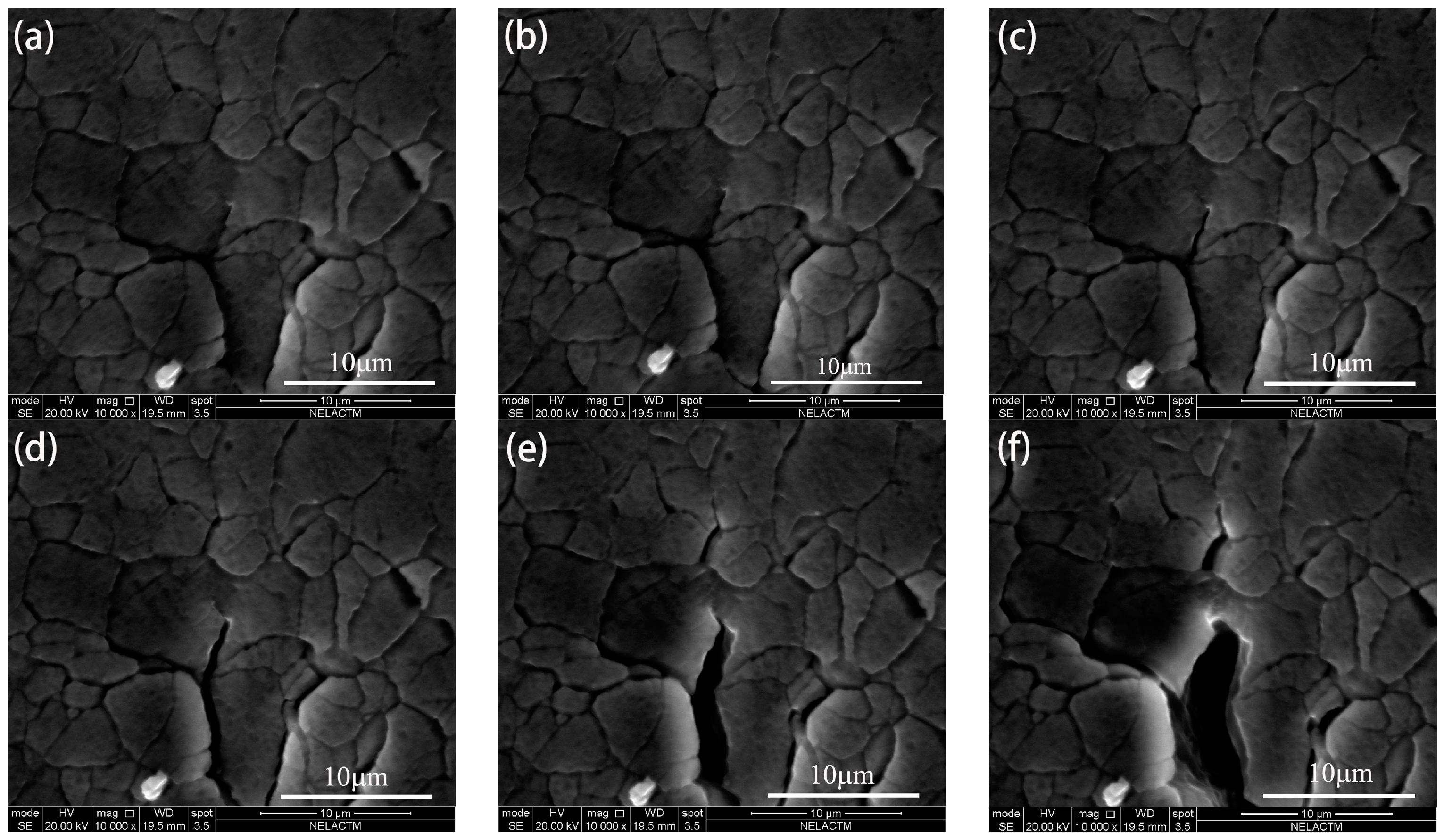
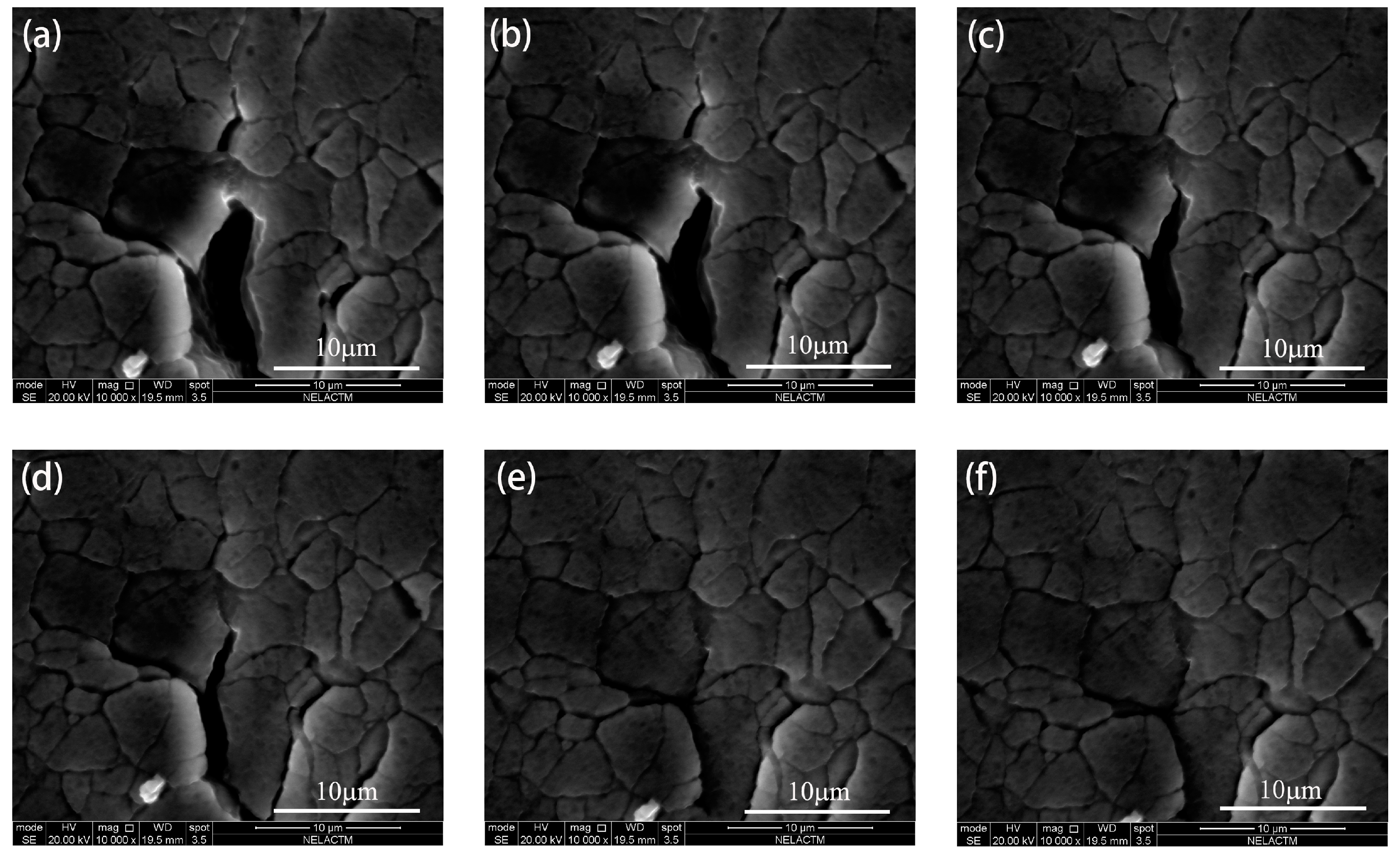
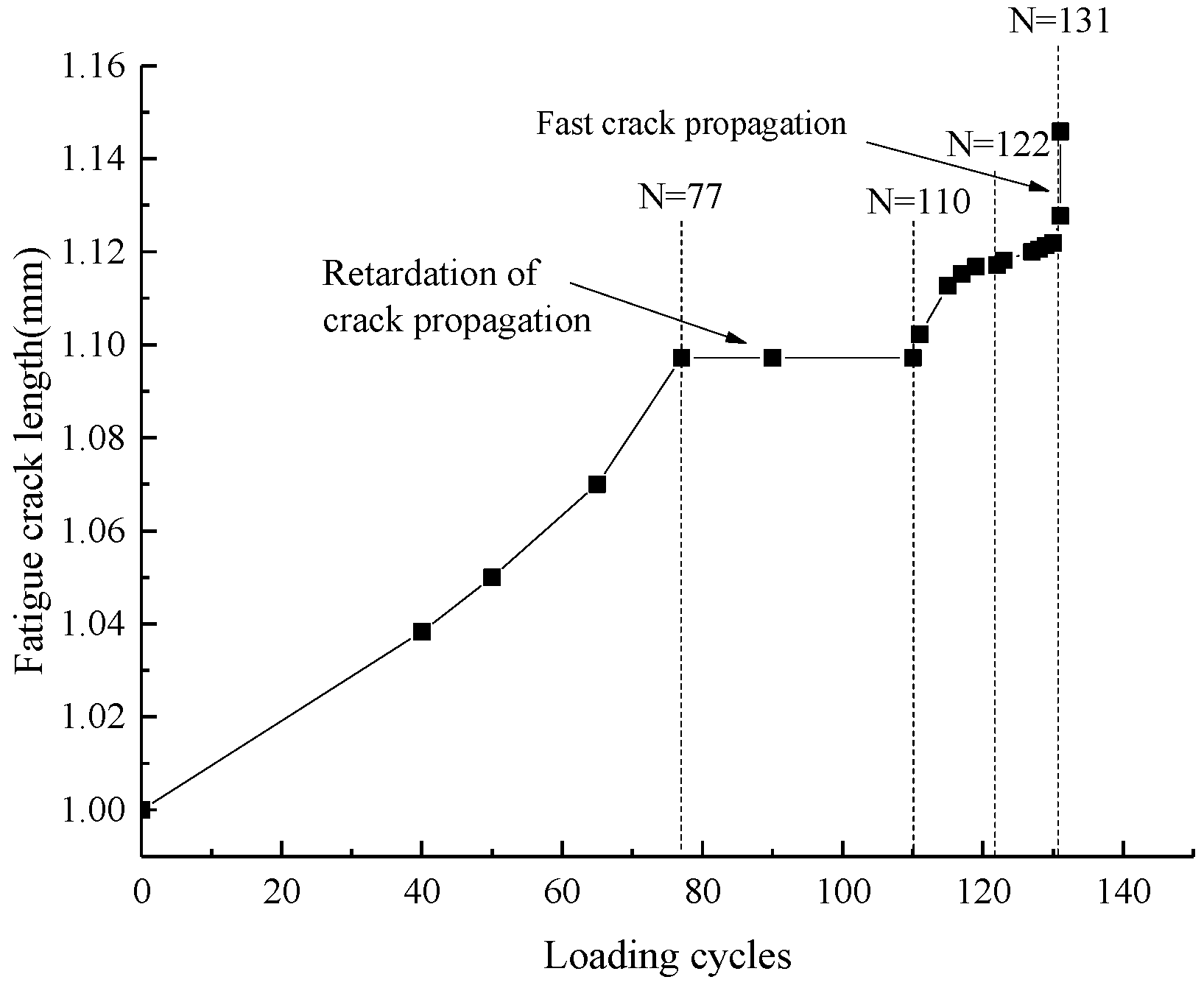
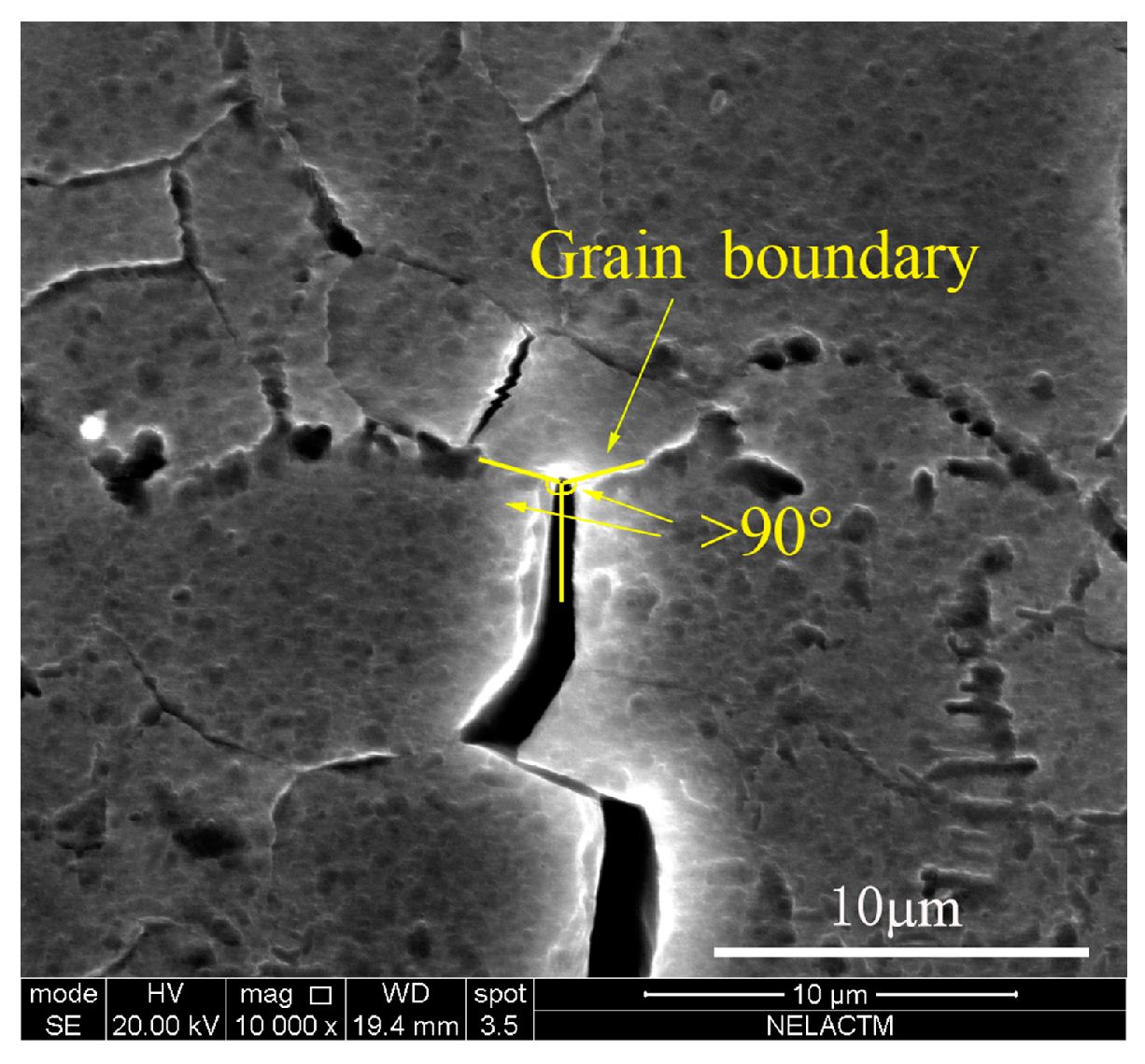
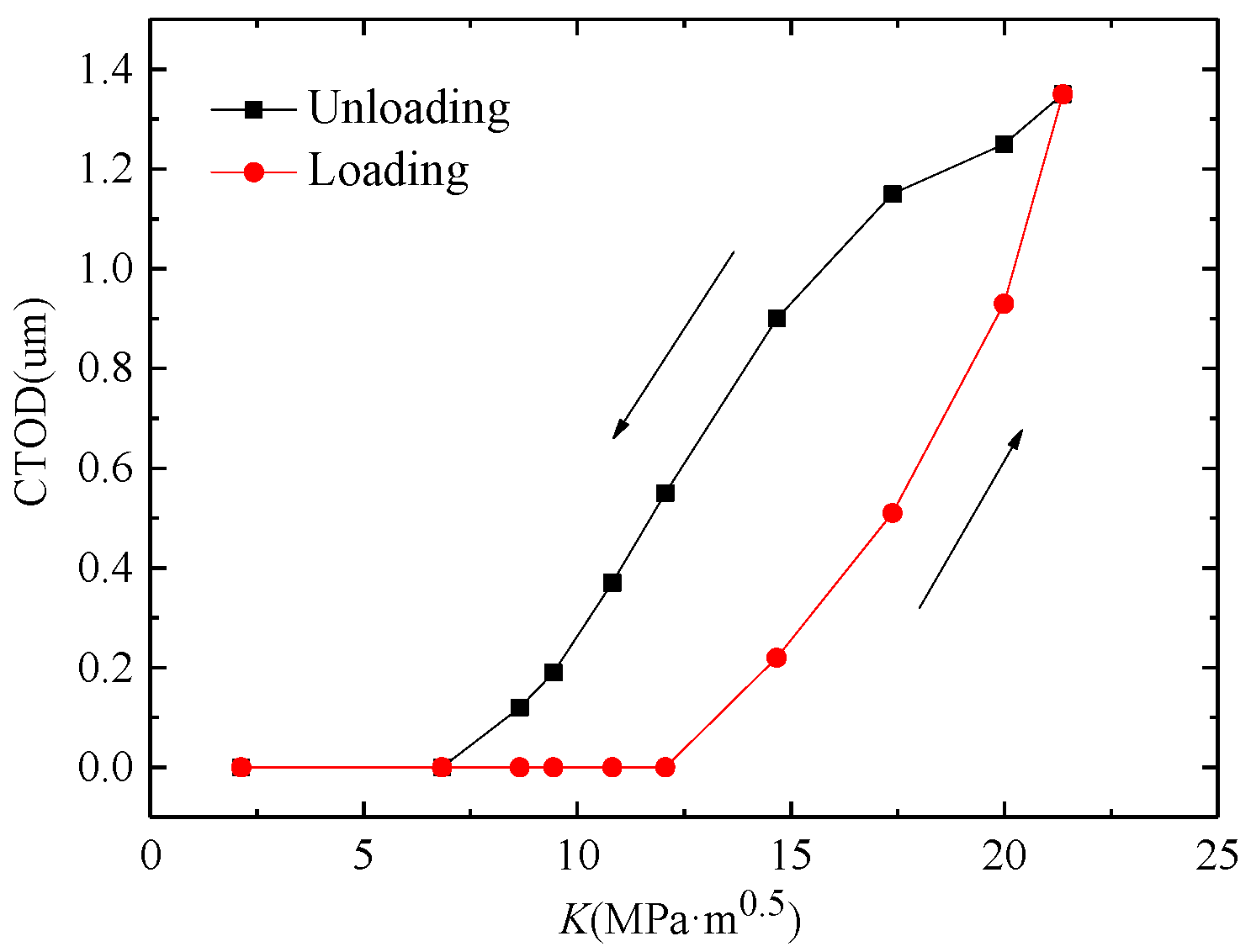


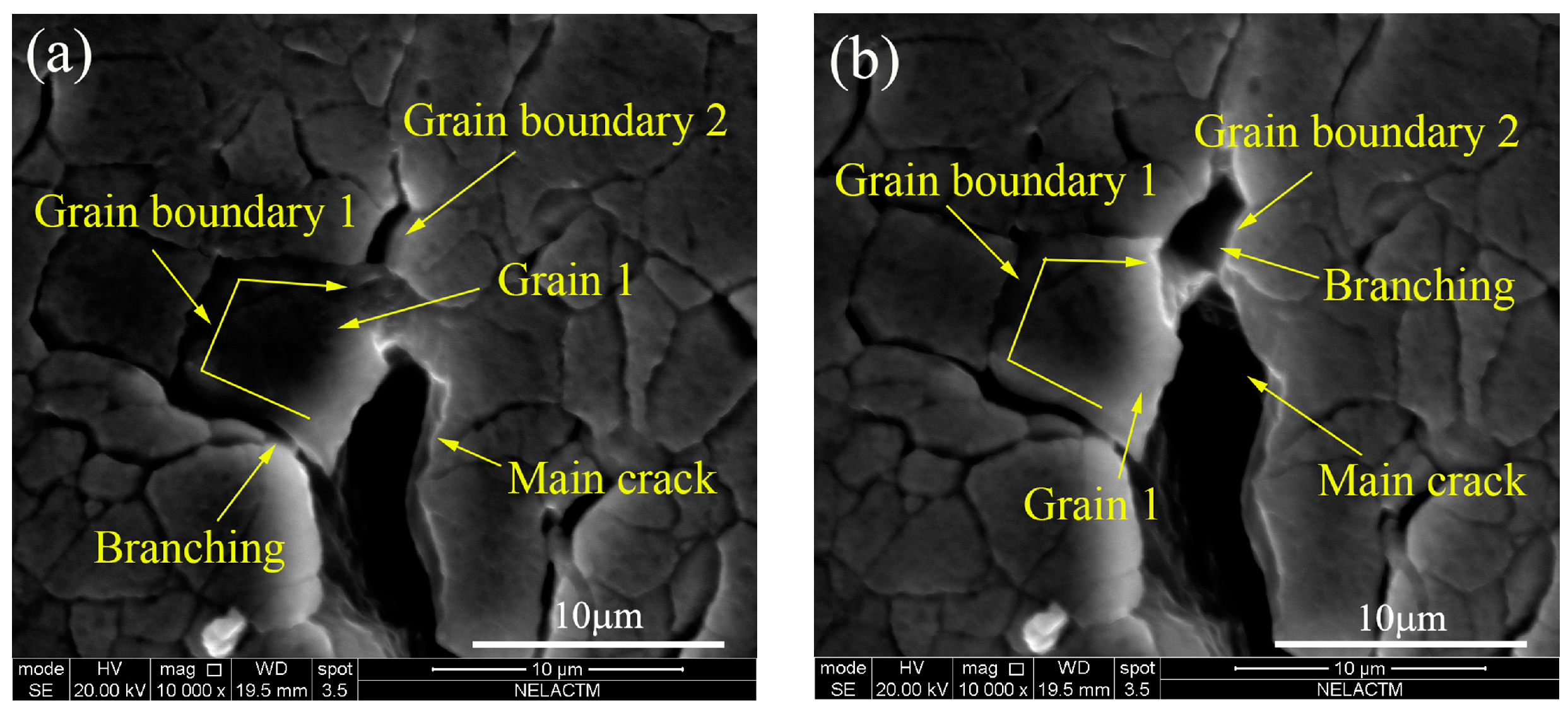
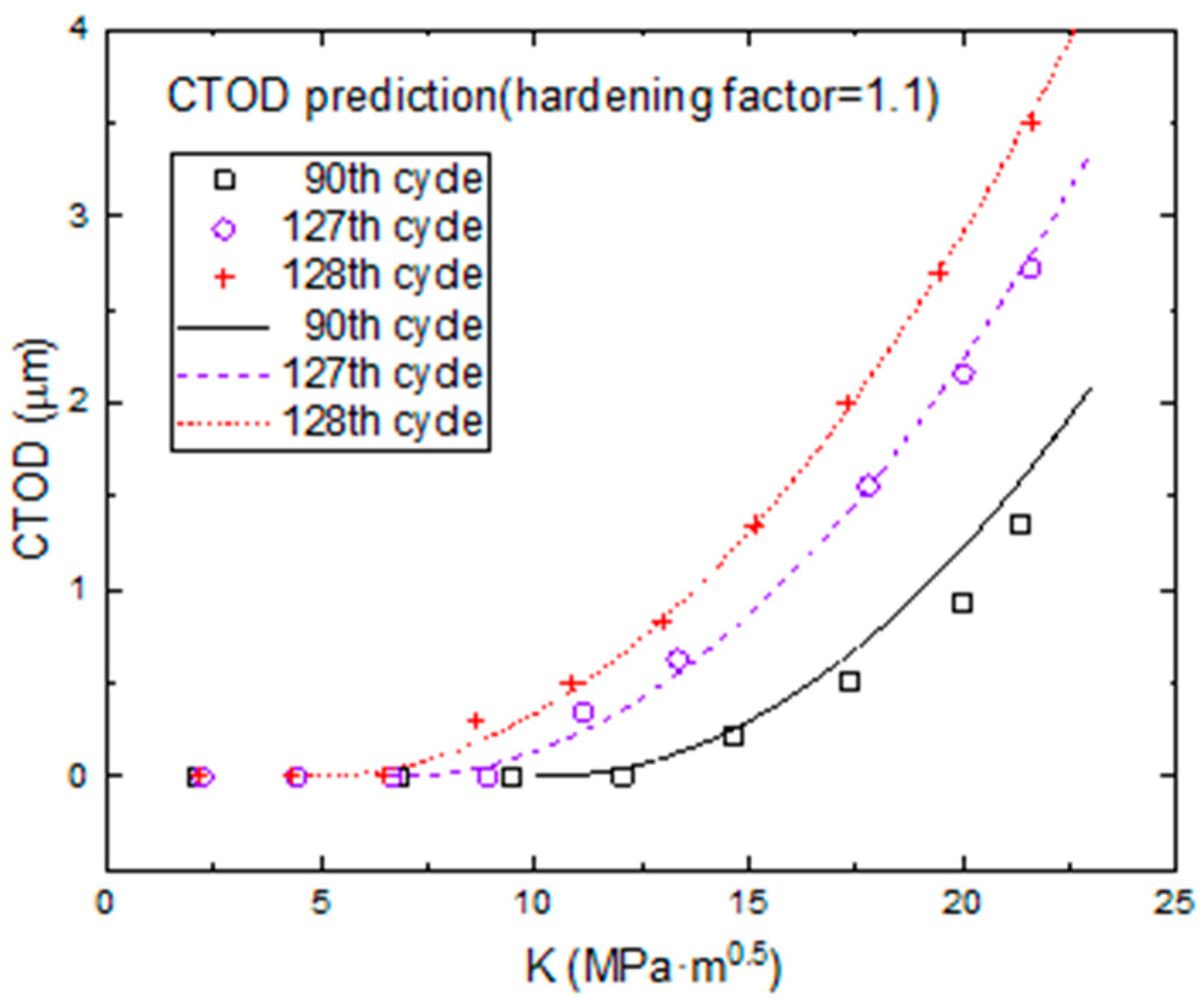
| Element | Weight Percentage |
|---|---|
| Al | Bal. |
| Zn | 5.9 |
| Mg | 2.29 |
| Cu | 2.11 |
| Zr | 0.13 |
| Fe | 0.051 |
| Ti | 0.026 |
| Si | 0.021 |
| Cr | 0.009 |
| Mn | 0.008 |
| Mechanical Properties | Value |
|---|---|
| Ultimate strength, σb (MPa) | 558 |
| Yield strength, σy (MPa) | 494 |
| Elastic modulus, E (GPa) | 73 |
| Fracture toughness, KIC (MPa) | 38.15 |
| Poisson’s ratio, ν | 0.33 |
© 2018 by the authors. Licensee MDPI, Basel, Switzerland. This article is an open access article distributed under the terms and conditions of the Creative Commons Attribution (CC BY) license (http://creativecommons.org/licenses/by/4.0/).
Share and Cite
Wang, H.; Zhang, W.; Zhang, J.; Dai, W.; Zhao, Y. Investigative Method for Fatigue Crack Propagation Based on a Small Time Scale. Materials 2018, 11, 774. https://doi.org/10.3390/ma11050774
Wang H, Zhang W, Zhang J, Dai W, Zhao Y. Investigative Method for Fatigue Crack Propagation Based on a Small Time Scale. Materials. 2018; 11(5):774. https://doi.org/10.3390/ma11050774
Chicago/Turabian StyleWang, Hongxun, Weifang Zhang, Jingyu Zhang, Wei Dai, and Yan Zhao. 2018. "Investigative Method for Fatigue Crack Propagation Based on a Small Time Scale" Materials 11, no. 5: 774. https://doi.org/10.3390/ma11050774





